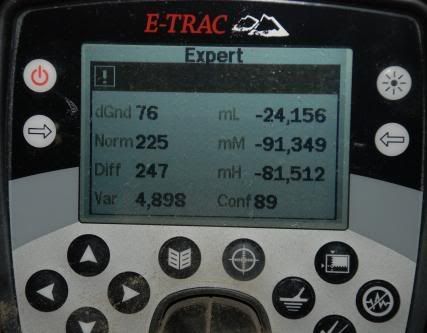1.1.3 Multi-frequency or multi-period coin detectors.
Multi-frequency transmitting and receiving metal detectors have a significant advantage in time constant discrimination, and to some extent ferrous discrimination capability, over the most common form of detector, the VLF detector. “VLF” stands for Very Low Frequency, and refers to the frequency of the single-frequency sine-waves that they transmit, usually at high pitched audio frequencies. There are basically 2 types of “multi-frequency” detectors currently available for coin detection. Some transmit square waves, which is effectively a multi-frequency transmission. Minelab’s Sovereign, Excalibur and Explorer units use a more advanced transmit signal consisting of multi-period rectangular waves, which gives more useful information (more frequencies, in effect) than square waves. The major advantage results from having several different frequency R signals. These can be used to more accurately determine time constants of targets because these different frequency R signals are not contaminated by soil mineralisation X signals, unlike the more common VLF detectors which use R and the mineralisation contaminated X channel to determine the target time constant. In essence, targets with short time constants produce larger high frequency R signals than low frequency R signals, whereas with long time constant targets, the low frequency R signals are larger than the high frequency R signals. Thus, the ratio of the low frequency R component to the high frequency R component gives a measure of the target time constant without interference from the large soil X component. In addition, it is possible to extract a better assessment of the ferrous/non-ferrous nature of a target using multi-period rectangular waves by measuring X when this target component is maximized during a particular period of the multi-period rectangular signal. No equivalent such period occurs in a VLF system. See Chapter 2.9 for more information on Minelab’s BBS and FBS ferrous target processing. This results greater accuracy of discrimination at greater depths.

